Potřebujeme váš souhlas k využití jednotlivých dat, aby se vám mimo jiné mohly ukazovat informace týkající se vašich zájmů. Souhlas udělíte kliknutím na tlačítko „OK“.
ASTM G130-12
Standard Test Method for Calibration of Narrow- and Broad-Band Ultraviolet Radiometers Using a Spectroradiometer
Automaticky přeložený název:
Standardní zkušební metoda pro kalibraci úzkým a Broad-Band Ultraviolet Radiometry Použití Spectroradiometer
NORMA vydána dne 1.6.2012
Informace o normě:
Označení normy: ASTM G130-12
Poznámka: NEPLATNÁ
Datum vydání normy: 1.6.2012
Kód zboží: NS-57341
Počet stran: 9
Přibližná hmotnost: 27 g (0.06 liber)
Země: Americká technická norma
Kategorie: Technické normy ASTM
Kategorie - podobné normy:
Anotace textu normy ASTM G130-12 :
Keywords:
ICS Number Code 17.180.20 (Colours and measurement of light)
Doplňující informace
| Significance and Use | ||||||||
|
4.1 This test method represents the preferable means for calibrating both narrow-band and broad-band ultraviolet radiometers. Calibration of narrow- and broad-band ultraviolet radiometers involving direct measurement of a standard source of spectral irradiance is an alternative method for calibrating ultraviolet radiometers. This approach is valid only if corrections for the spectral response of the instrument and the spectral mismatch between the calibration spectral distribution and the target spectral distribution can be computed. See Test Method for a description of the spectral mismatch calculation. 4.2 The accuracy of this calibration technique is dependent on the condition of the light source (for example, cloudy skies, polluted skies, aged lamps, defective luminaires, etc.), and on source alignment, source to receptor distance, and source power regulation. 4.3 Spectroradiometric measurements
performed using either an integrating sphere or a cosine receptor
(such as a shaped PTFE4.4 Calibration measurements
performed using a spectroradiometer equipped with a
pyrheliometer-comparison tube (a sky-occluding tube), regardless of
whether affixed directly to the monochromator's entrance slit, to
the end of a fiber optic bundle, or to the aperture of an
integrating sphere, shall not be performed unless the radiometer
being calibrated is configured as a pyrheliometer (possesses a
view-limiting device having the approximate optical constants of
the spectroradiometer's pyrheliometer-comparison tube).
4.5 Spectroradiometric measurements performed using source optics other than the integrating sphere or the “standard” pyrheliometer comparison tube, shall be agreed upon in advance between all involved parties. 4.6 Calibration measurements that meet the requirements of this test method are traceable to a national metrological laboratory that has participated in intercomparisons of standards of spectral irradiance, largely through the traceability of the standard lamps and associated power supplies employed to calibrate the spectroradiometer according to G138, the manufacturer‘s specified procedures, or CIE Publication 63. 4.7 The accuracy of calibration measurements performed employing a spectroradiometer is dependent on, among other requirements, the degree to which the temperature of the mechanical components of the monochromator are maintained during field measurements in relation to those that prevailed during calibration of the spectroradiometer. [1] 1.1 This test method covers the
calibration of ultraviolet light-measuring radiometers possessing
either narrow- or broad-band spectral response distributions using
either a scanning or a linear-diode-array spectroradiometer as the
primary reference instrument. For transfer of calibration from
radiometers calibrated by this test method to other instruments,
Test Method E824 should be used.
1.2 This test method is limited to
calibrations of radiometers against light sources that the
radiometers will be used to measure during field use.
1.3 Calibrations performed using
this test method may be against natural sunlight, Xenon-arc
burners, metal halide burners, tungsten and tungsten-halogen lamps,
fluorescent lamps, etc.
1.4 Radiometers that may be calibrated by this test method include narrow-, broad-, and wide-band ultraviolet radiometers, and narrow-, broad, and wide-band visible-region-only radiometers, or radiometers having wavelength response distributions that fall into both the ultraviolet and visible regions. 1.5 This standard does not
purport to address all of the safety concerns, if any, associated
with its use. It is the responsibility of the user of this standard
to establish appropriate safety and health practices and determine
the applicability of regulatory limitations prior to use.
|
||||||||
| 2. Referenced Documents | ||||||||
|
Podobné normy:
Historická
1.12.2009
Historická
1.10.2013
Historická
1.5.2014
Historická
1.7.2009
Historická
1.7.2012
Historická
15.8.2006


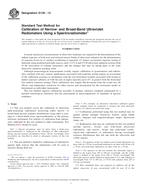
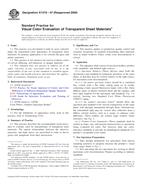 ASTM E1478-97(2009)..
ASTM E1478-97(2009)..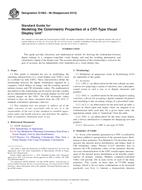 ASTM E1682-08(2013)..
ASTM E1682-08(2013)..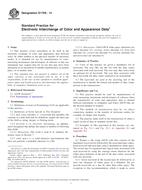 ASTM E1708-14
ASTM E1708-14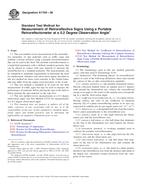 ASTM E1709-09
ASTM E1709-09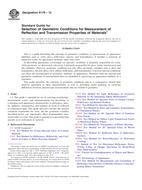 ASTM E179-12
ASTM E179-12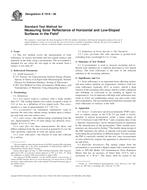 ASTM E1918-06
ASTM E1918-06
 Cookies
Cookies
